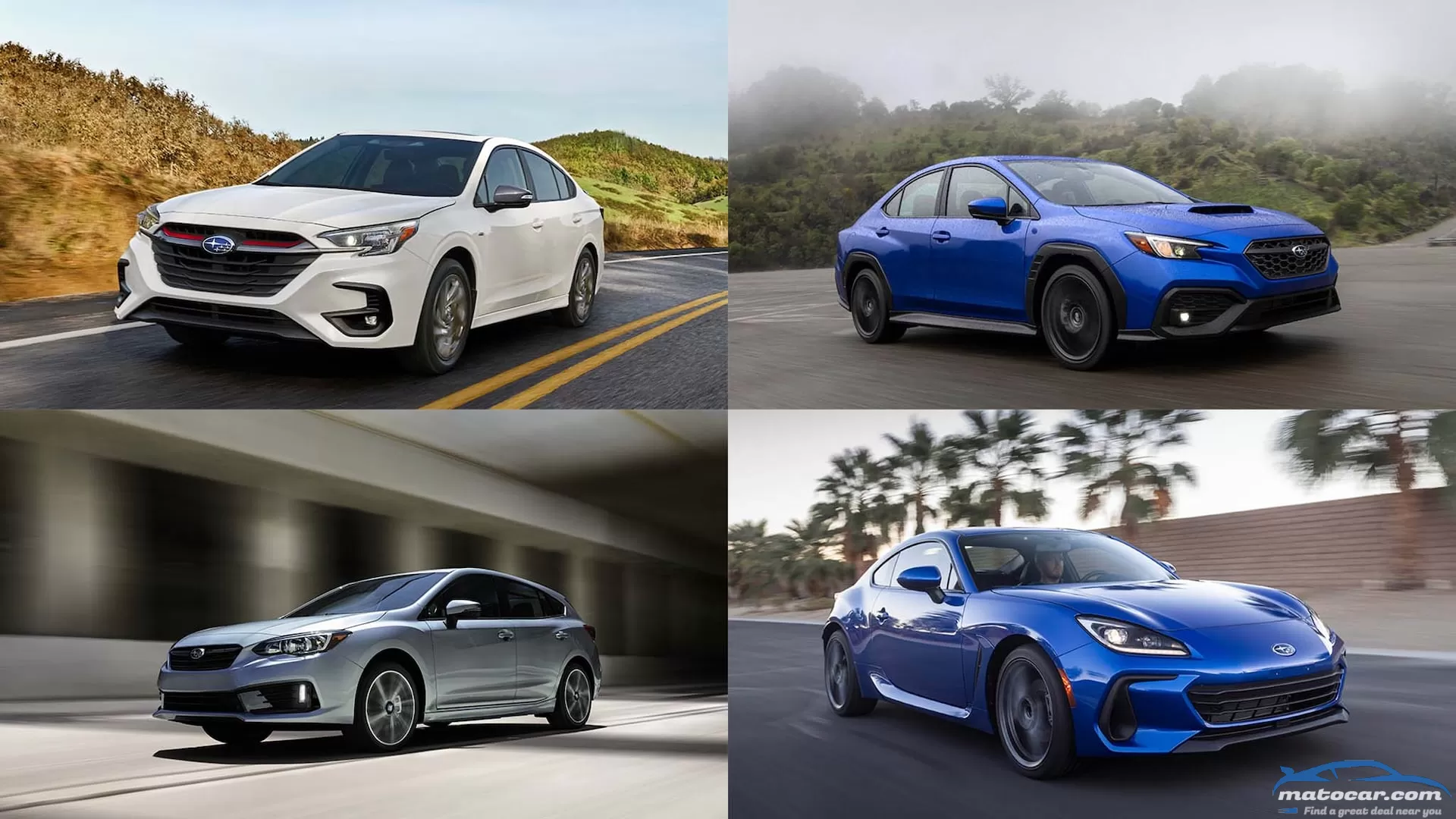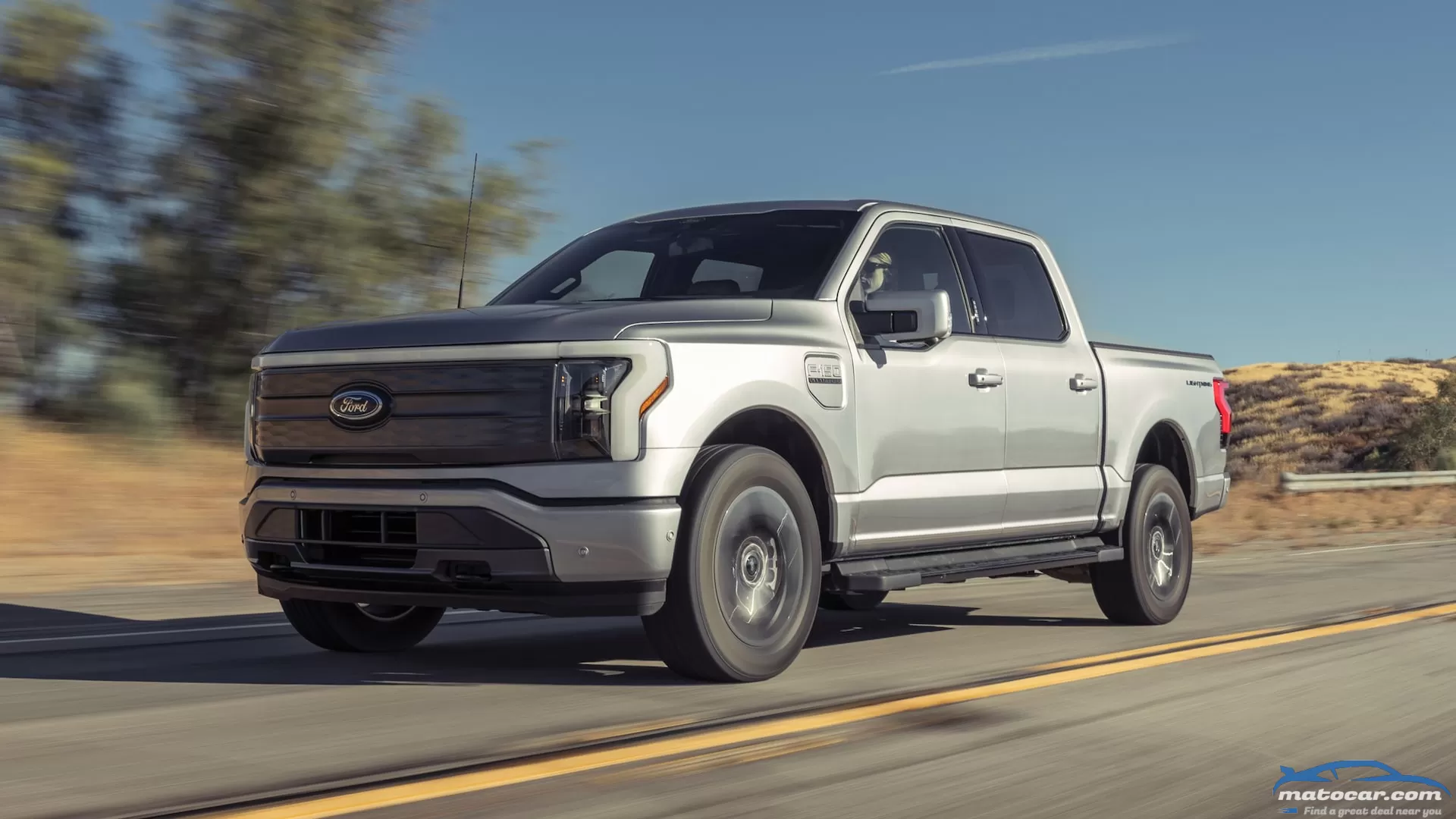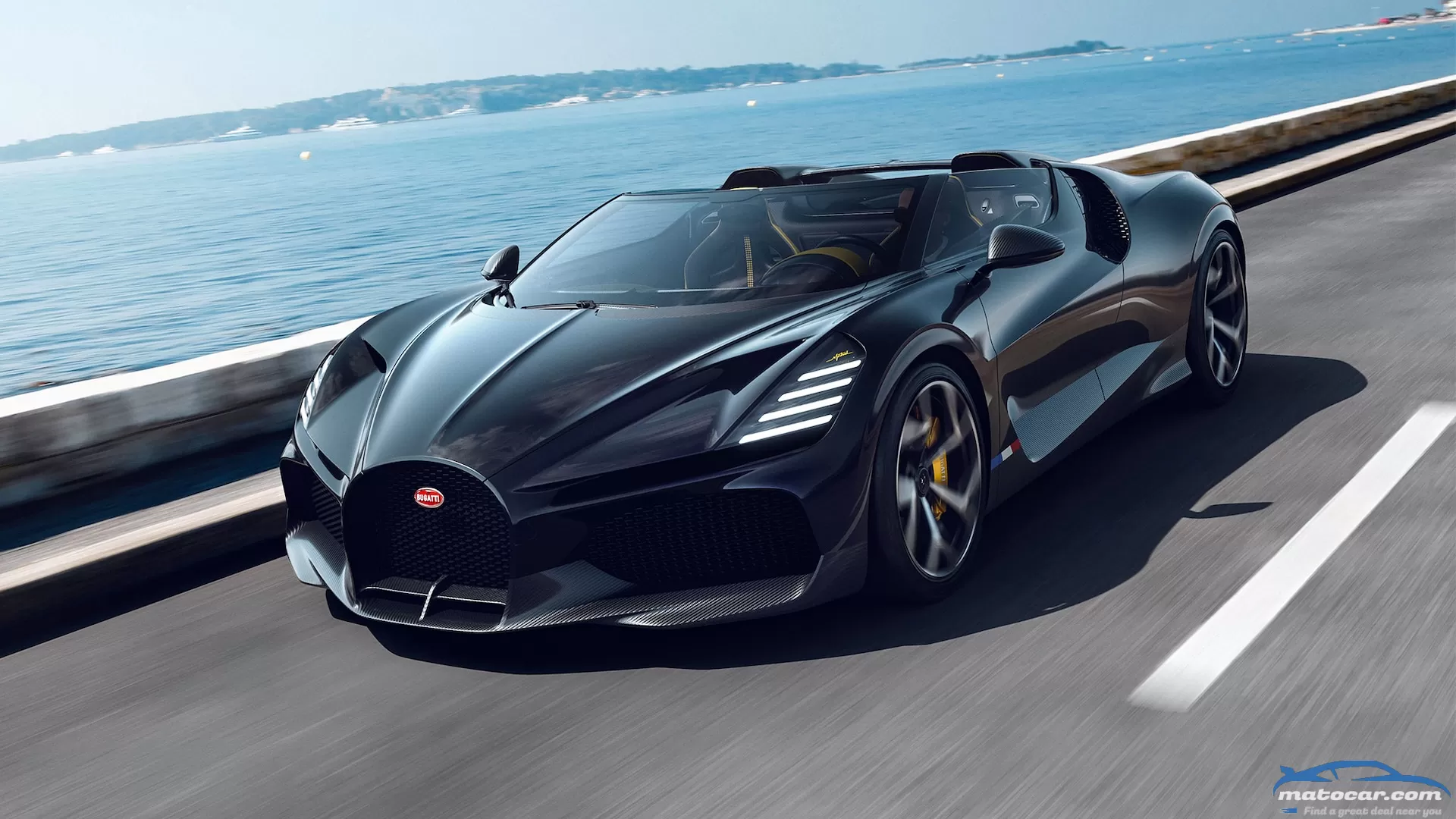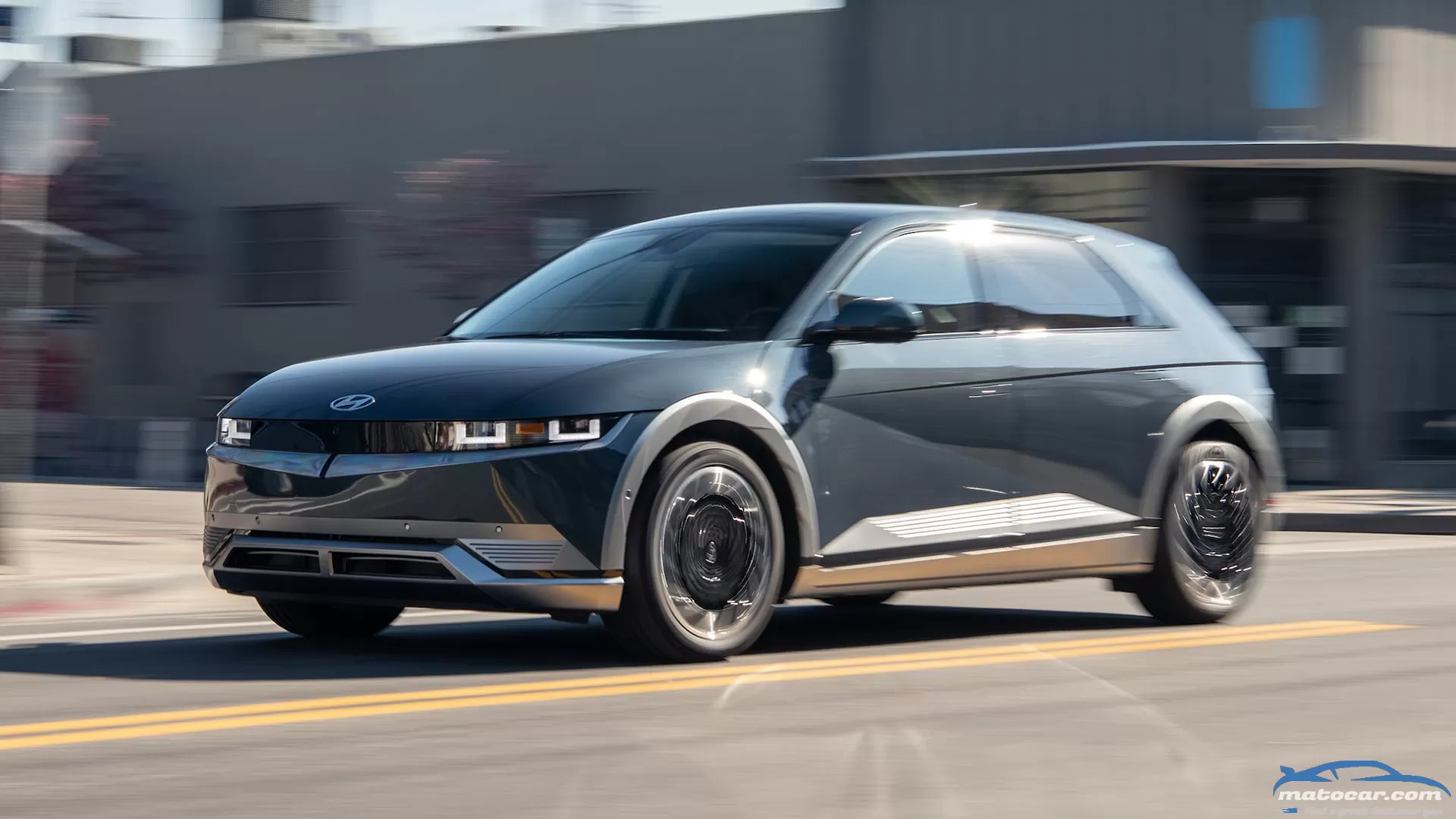2023 Subaru Car Lineup Changes: What’s New for the Impreza, Legacy and More

Although Subaru's stable swells with SUVs, its lineup of cars remains robust for the 2023 model year. The automaker, which is best known for its all-wheel-drive cars and SUVs, just overhauled the sporty BRZ coupe and WRX sedan for 2022. For 2023, the entire lineup carries over with minor changes, aside from the Legacy's fresh sheetmetal. Read on to see what updates have arrived for the 2023 Subaru cars lineup.
Want to learn more about 2023 Subaru SUVs? Check out the changes here.
You may also like
ford f-150-lightning Full OverviewYou no doubt keep hearing about how important the 2022 Ford F-150 Lightning electric pickup truck is to the automotive industry. The bestselling vehicle in America—one with a traditionally conservative ownership base—is taking a giant leap toward our inevitable future by electrifying. You may have also read our First Test of the range-topping 2022 F-150 Lightning Platinum and might be wondering (as we were) how a slightly more mainstream model would perform. Ford was kind enough to send the still-premium but slightly more affordable 2022 F-150 Lighting Lariat Extended Range to our Los Angeles office, and we took it to our test track to see what it could do.Why It's ImportantLike the metal it's named for, the F-150 Lightning Platinum will likely be among the rarest variants of the new electric pickup's lineup. It's also the heaviest variant, at 6,900 pounds, which makes it the most inefficient, too—netting just 300 miles of EP-rated range. The F-150 Lightning Lariat Extended Range (meaning it has the optional $10,000 130-kWh battery that comes standard on the Platinum) is bit leaner than the Platinum at 6,794 pounds, good for 320 miles of range, and more akin to the midgrade XLT Extended Range models, which are likely to make up the bulk of Ford's Lightning sales. It features dual permanent-magnet electric motors that combine for 580 hp and 775 lb-ft of torque. The motors are mounted at the front and rear axles (in fact, if you peek underneath the Lightning, you can spot the rear motor hanging out where you'd expect a differential to be on gas models) giving them all-wheel drive.Pros: What We LikeThere's a lot to like about this "lesser" Lightning. For starters, the Lariat is quicker than the loaded Platinum. The F-150 Lightning Lariat zips from 0 to 60 mph in 3.8 seconds and on through the quarter mile in 12.4 seconds at 106.9 mph, while the Platinum's bests were 4.0 seconds to 60 mph and 12.7 seconds at 105.9 mph. That makes the F-150 Lightning Lariat the quickest F-150 we've ever tested and the third-quickest pickup we've ever tested, just behind the 2022 Rivian R1T (3.1 seconds, 11.6 seconds at 110.8 mph) and 2022 GMC Hummer EV pickup (3.0 seconds, 11.7 seconds at 105.4 mph).More than its performance, the F-150 Lightning Lariat is plain great to drive. Its powertrain is effortlessly smooth (except for occasional front-motor torque steer under hard acceleration in low-traction situations), and it has gobs of power, providing nearly endless acceleration no matter your starting speed. The Lightning handles surprisingly well, too. Despite its trucklike ride and steering feel, its low center of gravity helps it corner far better than gas F-150s. And we continue to value its huge frunk, which offers a ton of lockable storage while keeping the cabin available for four or five passengers.Cons: What We Don't LikeAs software becomes more prevalent in new vehicles, it's rapidly becoming more important in defining how we experience our cars, trucks, and SUVs. In the Ford's case there's some room for improvement there. For starters, the F-150 Lightning's peak charge rate (150 kW officially, 171 kW in our testing) is on the conservative end for a vehicle with such a massive battery pack. Effectively a measure of the maximum rate an EV can cram electrons into its battery pack while DC fast charging, the Ford's peak charge rate is slower than an R1T with a similarly sized battery pack (220 kW) and the Hummer EV, which sports 200 kWh of capacity and has a 350-kW peak charge rate. That means the Ford's electric pickup truck competitors will likely be spending less time at the fast charger while on a road trip or towing than the Lightning.We also found the massive 15.5-inch touchscreen to be a bit laggy at times and not as thoughtfully organized as it could be. For example, changing the F-150's drive mode requires a tap on the Lightning icon in the top left corner then another tap on your preferred mode. Locking the rear differential requires you navigate back to that screen then scroll down and tap the diff button. If you find yourself regularly hitching and unhitching trailers, you'll also need to access the towing menus often to "virtually" disconnect the trailer and restore your unladen driving range to the Ford's digital instrument cluster. The Lightning can also prove fussy when adjusting settings like maximum charge percent, which must be manually toggled each time you plug in, or the truck otherwise defaults to 90 percent maximum charge.Given Ford's embrace of software in its new "Model e" EV division, we're cautiously optimistic that the Lightning will be improved via over-the-air (OTA) updates, much in the same way its competitors are.The Bottom LineThe Ford F-150 Lightning Lariat is a seriously compelling electric pickup truck without the fuss (or some of the finesse) of the R1T or Hummer EV pickup.Looks good! More details?2022 Ford F-150 Lightning Lariat (Ext Range) Specifications BASE PRICE $69,269 PRICE AS TESTED $80,839 VEHICLE LAYOUT Front- and rear-motor, AWD, 5-pass, 4-door truck MOTOR TYPE Permanent-magnet electric POWER (SAE NET) 580 hp TORQUE (SAE NET) 775 lb-ft TRANSMISSIONS 1-speed automatic CURB WEIGHT (F/R DIST) 6,794 lb (50/50%) WHEELBASE 145.5 in LENGTH x WIDTH x HEIGHT 232.7 x 80.0 x 78.3 in 0-60 MPH 3.8 sec QUARTER MILE 12.4 sec @ 106.9 mph BRAKING, 60-0 MPH 133 ft LATERAL ACCELERATION 0.73 g (avg) MT FIGURE EIGHT 27.2 sec @ 0.63 g (avg) EPA CITY/HWY/COMB FUEL ECON 78/63/70 mpg-e EPA RANGE, COMB 320 miles ON SALE Now Show All
This is it. The end of an era. The 2024 Bugatti Mistral will be the last car the storied hypercar maker will ever build with the mighty quad-turbo, 8.0-liter, W-16 engine. Just 99 will be built, and despite a $5.1-million price tag, all are sold.The Mistral is powered by the same 1600-hp version of the W-16 that propels the record-breaking Chiron Super Sport 300+, making it the most potent open-top internal combustion engine production car ever built. Bugatti's previous roadster, the 1,200-hp Veyron Grand Sport Vitesse, set an open-top production car speed record of 254.04 mph in 2013. Bugatti design director Achim Anscheidt says the company is planning to top 260 mph in the Mistral.It's More Than What's UnderneathThe Mistral is basically a Chiron Super Sport under the skin. But it's more than just a Chiron Super Sport with the roof removed. "You can't just cut open a Chiron," says Anscheidt, not the least, he points out, because that would compromise the sweeping arc that starts at the A-pillar and loops around the side of the car. "It would look terrible."The Mistral's tauter surfaces and crisper lines are more than just a solution to an existing design challenge. They hint at the styling direction for the next-generation plug-in hybrid Bugatti currently under development in a new design and engineering hub in Berlin, Germany, and in Zagreb, Croatia, site of the global headquarters of the Bugatti Rimac Group headed by Mate Rimac. There are elements of the Bugatti Divo in the Mistral's overall form, though it's nowhere near as extreme in terms of its detailing. "Divo was quite aggressive," concedes Anscheidt. "This car simplifies that quite a bit. Bugatti has a strong graphic DNA, and the stronger the graphic DNA, the calmer the rest of the car can be."The famous horseshoe grille is the widest yet seen on a modern Bugatti and is framed by large cooling vents, vertically stacked headlights, and ducts that create air curtains along either side of the car to improve aerodynamic efficiency. The dramatic rear taillight graphic is derived from that of the track-only Bugatti Bolide. "That car had such a strong identity," Anschedt said. "We wanted to transfer that to a production car."Whereas the Chiron's looping body-side signature hides engine air and oil cooler intakes, in the Mistral these have been visually separated. The side vents are for the oil coolers only, while hot air exits at the rear of the car between the diagonal elements of the rear lights.Lots of Engine, No RoofThe Mistral's mighty W-16 gulps almost 2,500 cubic feet of air per minute at full throttle through two giant scoops mounted behind the seats. The intake openings are slightly larger than those of the Chiron Super Sport, but they have been engineered so the airflow is the same. The scoops funnel to a new airbox with a new filter setup and are strong enough to take the 4,400-plus-pound weight of the car in the event of a roll over.A bridge between the two scoops hides a small glass panel designed to prevent hot air from the engine compartment from washing into the open cockpit. There is no roof, and none is planned other than a small emergency cover. Bugatti roadster owners don't drive in the rain.The Mistral's steeply raked A-pillars and side windows echo those of the one-of-a-kind, $18.9-million Bugatti La Voiture Noire. The updated A-pillars, which can also support the weight of the car in a rollover, required a major rework of the top part of the Chiron tub. Strengthening elements have also been laid into the sills and the central tunnel of the tub to compensate for the lack of a roof. As a result, the Mistral weighs about the same as a Chiron Super Sport and has very similar suspension settings."The target was for the car to drive like a Super Sport," Bugatti deputy design director Frank Heyl said. The Mistral doesn't have the extended tail and larger rear wing of the Super Sport, however; instead, additional downforce is provided by a redesigned rear diffuser, which—as in all Chirons—is blown over by two of the six exhaust outlets. The Mistral's other four exhausts exit through a single central outlet.Opulence, It Has ItThe Mistral's opulently trimmed cabin features leather on the doors and seats hand-woven by workers in the Bugatti design department. The shifter on the center console is machined from a solid block of aluminum but includes a wood insert and, set in amber, a bronze miniature of Rembrandt Bugatti's famous dancing elephant sculpture, originally used as the hood ornament on the extravagant Type 41 built between 1927 and 1933.The amber, as well as the yellow-and-black color combination, recall colors and materials favored by the Bugatti family. If they choose, instead of a dancing elephant miniature, Mistral owners can opt to have their own special keepsakes encased in the shifter.The Mistral is also the first Volkswagen Group Bugatti not to carry a name from the marque's past—Veyron and Chiron were the names of Bugatti racing drivers from the 1930s. When asked what Mistral means, Aschim Anscheidt jokes: "It means that Maserati [which built a car called the Mistral between 1963 and 1970] didn't renew the trademark."More seriously, the name, which comes from a strong wind that blows down the Rhône Valley and through southern France, is meant to reinforce Bugatti's credentials as a French brand, despite its Croatian and German owners. That's also the reason for the red-white-and-blue tricolor band near the front wheels.The Bugatti Mistral has been designed to send off the W-16 in grand style, to celebrate the unique sound and titanic thrust of one of the most extraordinary engines ever put in a production car. And if the Grand Sport Vitesse roadster, a car we said offered the Bugatti Veyron experience in shattering 7.1 surround sound, is any guide, driving the Mistral will indeed be a spectacular experience.
hyundai ioniq-5 Full OverviewThe 2022 Hyundai Ioniq 5 is the most consequential new Hyundai since the original Genesis sedan. The Genesis changed people's perception of Hyundai as a brand, for the first time putting the Korean automaker in the luxury conversation alongside names such as Mercedes-Benz, BMW, and Lexus. The new 2022 Hyundai Ioniq 5 is destined to change the perception of Hyundai again—only this time the conversations will be around Tesla.What Is It?The Ioniq 5 is the first Hyundai EV built on Hyundai Motor Group's Electric-Global Modular Platform (E-GMP). The Ioniq 5 is available worldwide with either a 58-kWh or 77.4-kWh battery pack and a single motor driving the rear wheels or (with the 77.4-kWh battery) motors front and rear providing all-wheel drive. In North America, the 77.4-kWh battery pack is the sole option.Even by the standards of today's topsy-turvy automotive taxonomy, the 2022 Hyundai Ioniq 5 is something of a segment buster. In photos, its crisp styling and taut proportions suggests a Veloster-sized hatchback with a sort of Hyundai-does-VW-Golf vibe. Look again and consider: It's rolling on 20-inch wheels and 255/45 Michelin Primacy Tour tires. In the metal, the Ioniq 5 is almost as big as a BMW X3, with a 118.1-inch wheelbase—that's an inch longer than a BMW X5's.Car Style, SUV SubstanceOur test vehicle is the range-topping 2022 Hyundai Ioniq 5 Limited HTRAC, which comes equipped with the big battery and all-wheel drive courtesy of two motors that produce a total of 320 hp and 446 lb-ft of torque. It also boasts a swag of premium goodies ranging from a power driver's seat with memory to a high-end Bose audio system to a head-up display and adaptive cruise control. You get all of this for $55,725.That's considerably less money than you'll spend for a dual-motor Tesla Model Y Long Range, which is listed at $60,900. What's more, the Hyundai looks and feels like a much more premium product. Where the Model Y's cabin is stark and austere, the Hyundai Ioniq 5's interior is thoughtfully detailed and well-finished, and it has buttons and knobs and targeted touch panels that mean you don't have to waste time looking away from the road to peck furiously at a giant screen to access mundane functions as you do in the Tesla. And while from the outside the Model Y looks as if it's been thrown together in a tent, with inconsistencies in the panel fits you can see from, er, Mars, the Hyundai's fit and finish is first rate.Testing, TestingThe new Ioniq 5 initially feels like a softer car to drive than many of its EV contemporaries, with its suspension seemingly tuned more for comfort than corners. But that's not to say it's slow. At the test track, the 0-60-mph sprint took just 4.4 seconds en route to a standing quarter-mile time of 13.2 seconds at 102.7mph. And unlike some EVs—the Ford Mustang Mach-E GT Performance Edition is a notable example—the Hyundai's rate of acceleration didn't fall off dramatically as speeds increased. Instead, it was able to sustain its forward push right through the quarter mile.Yes, the Tesla Model Y Long Range is quicker overall, whooshing down the quarter mile in 12.4 seconds at 114.8 mph, but the difference between the two is mostly at high speed, which has little relevance in real-world driving. The Hyundai's superior torque—its twin motors produce an additional 70 lb-ft compared to the Tesla—effortlessly punches the Ioniq 5 away from a standstill, and it's only 0.3 second slower to 60 mph than the 7 percent lighter and 20 percent more powerful Model Y.Despite its soft suspension, the Hyundai Ioniq 5 is surprisingly adept in the twisty bits. We recorded a figure-eight lap time of 25.7 seconds, just 0.2 second slower than the BMW X3 M40i we happened to test on the same day. This caused us to exclaim, "Holy smokes!" Frankly, we didn't expect this car to be as fun and capable as it is; it's quick and has way more grip than we anticipatedThe biggest surprise was how playful the Ioniq 5 can be on corner exits with all the nannies switched off: It actually drifts. Just for fun, we tried for a full sideways lap of the skidpad, and the Hyundai made it two-thirds of the way around before letting go.The asymmetric front-to-rear power and torque split of the dual-motor Ioniq 5—the front motor makes 99 hp and 188 lb-ft, while the rear pumps out 225 hp and 258 lb-ft—combined with near neutral front/rear weight distribution doesn't just make the Hyundai a giggle when you want to play at the track. It also makes it feel more poised on normal roads at normal speeds, despite steering that, though precise and direct, doesn't provide a lot of feedback.Brake feel is the car's biggest dynamic niggle. The blending between regenerative and mechanical braking is smooth, and the system hauled the 4,684-pound Hyundai to a stop from 60 mph in 123 feet, 5 feet more than the Tesla Model Y required. But we disliked the lack of feedback through the pedal: There's very little travel or pedal pressure under heavy braking before the ABS kicks in.More DetailsYou can actuate one of three drive modes—Eco, Normal, and Sport—via a large button beneath the steering wheel's left spoke. In simple terms, the modes change the weighting of the accelerator pedal, effectively encouraging the driver to make smoother and gentler inputs. Six regenerative braking levels are offered, ranging from zero (which allows the Ioniq 5 to coast freely) to a mode that enables one-pedal driving, with the car slowing to a gentle halt the moment you lift off. There is also an auto mode. Drivers can switch between these modes via steering wheel paddles.After a bit of experimentation, we preferred to set the drive mode to Sport, which allowed us to make the most of the powertrain's instant-on response, and the lift-off regenerative braking to Level 1, which enabled the 2022 Hyundai Ioniq 5 to flow down the road much like a regular combustion-engine car with an automatic transmission when lifting off the accelerator.Range FinderHyundai says the 77.4-kWh battery gives the dual-motor Ioniq 5 a range of 256 miles. Our stints on the road, which included highway cruising at 70 to 80 mph and some brisk bursts along quiet back roads, as well as endless fiddling with drive modes and regen settings, saw the Ioniq 5 consume 2.7-kWh per mile, according to the onboard computer, which translated to a range of just about 200 miles. Driven normally, you should expect a usable range of 220 to 230 miles, more if you are content to noodle along in Eco mode.No, the Ioniq 5 Limited won't travel as far between charges as the Tesla Model Y Long Range, which has a claimed range of just more than 300 miles. But you'll spend about 30 percent less time at the charging station with the Hyundai. Find a 350-kW DC fast charger, and the Ioniq 5's battery can be juiced from 10 percent charge to 80 percent in just 18 minutes and topped up fully in less than an hour. No other mainstream EV, apart from the identical-under-the-skin Kia EV6, can recharge so quickly.Do You Want One?In terms of overall practicality, the 2022 Hyundai Ioniq 5 is a mixed bag. The long wheelbase and flat floor mean the rear seat easily accommodates 6-foot-tall adults, and there's plenty of storage space around the cabin. But unlike most two-box SUVs, it is truly a hatchback, not a wagon. The raked C-pillars and angled backlight chew into the shallow load space at the rear, and there's only a small storage tray in the frunk.If driving range and load lugging are your absolute priorities, the Tesla Model Y Long Range, which will travel 28 percent farther between charges and has about 60 percent more luggage capacity with the rear seats up, would seem the obvious choice. But those two advantages come at a price.The Ioniq 5 Limited not only costs about $5,000 less than the Model Y, but it's also quieter and more comfortable to drive, is a visibly higher-quality vehicle inside and out, and can recharge much quicker. That it's also brisk and fun to drive if you want it to be are bonuses.Indeed, the 2022 Hyundai Ioniq 5 Limited HTRAC is a compelling all-arounder for the buyer who wants a premium EV, without paying top dollar.Looks good! More details?2022 Hyundai Ioniq 5 HTRAC (Limited Long Range) SPECIFICATIONS BASE PRICE $55,725 PRICE AS TESTED $55,920 VEHICLE LAYOUT Front and rear-motor, AWD, 5-pass, 4-door SUV MOTOR TYPE Permanent-magnet electric POWER (SAE NET) 320 hp TORQUE (SAE NET) 446 lb-ft TRANSMISSION 1-speed automatic CURB WEIGHT (F/R DIST) 4,684 lb (51/49%) WHEELBASE 118.1 in LENGTH x WIDTH x HEIGHT 185.2 x 74.4 x 63.0 in 0-60 MPH 4.4 sec QUARTER MILE 13.2 sec @ 102.7 mph BRAKING, 60-0 MPH 123 ft LATERAL ACCELERATION 0.88 g (avg) MT FIGURE EIGHT 25.7 sec @ 0.71 g (avg) EPA CITY/HWY/COMB FUEL ECON 110/87/98 mpg-e EPA RANGE, COMB 256 mi ON SALE Early 2022 Show All




0 Comments